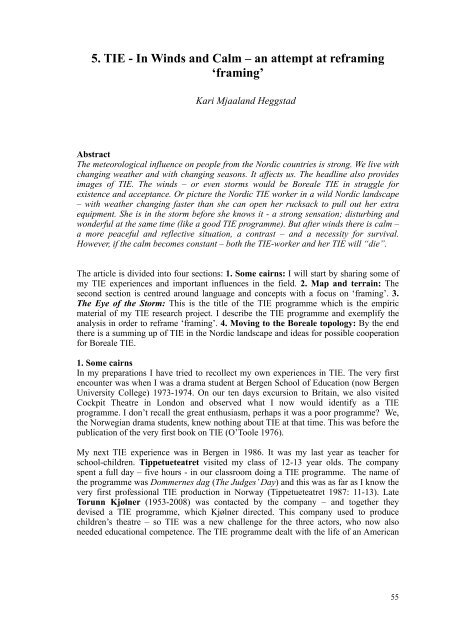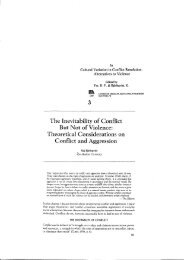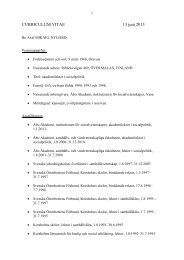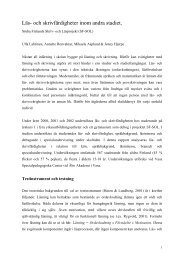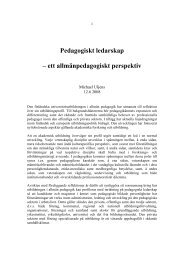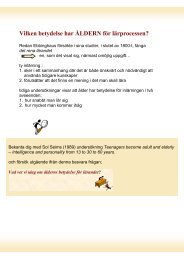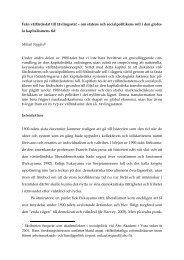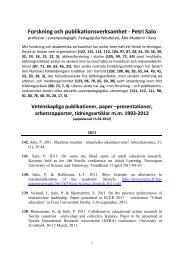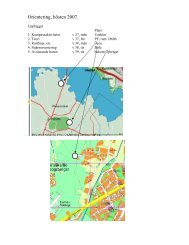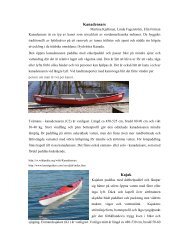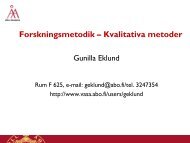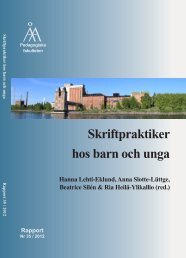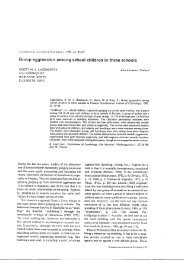Drama Boreale - Åbo Akademi
Drama Boreale - Åbo Akademi
Drama Boreale - Åbo Akademi
You also want an ePaper? Increase the reach of your titles
YUMPU automatically turns print PDFs into web optimized ePapers that Google loves.
5. TIE - In Winds and Calm – an attempt at reframing<br />
‘framing’<br />
Kari Mjaaland Heggstad<br />
Abstract<br />
The meteorological influence on people from the Nordic countries is strong. We live with<br />
changing weather and with changing seasons. It affects us. The headline also provides<br />
images of TIE. The winds – or even storms would be <strong>Boreale</strong> TIE in struggle for<br />
existence and acceptance. Or picture the Nordic TIE worker in a wild Nordic landscape<br />
– with weather changing faster than she can open her rucksack to pull out her extra<br />
equipment. She is in the storm before she knows it - a strong sensation; disturbing and<br />
wonderful at the same time (like a good TIE programme). But after winds there is calm –<br />
a more peaceful and reflective situation, a contrast – and a necessity for survival.<br />
However, if the calm becomes constant – both the TIE-worker and her TIE will “die”.<br />
The article is divided into four sections: 1. Some cairns: I will start by sharing some of<br />
my TIE experiences and important influences in the field. 2. Map and terrain: The<br />
second section is centred around language and concepts with a focus on ‘framing’. 3.<br />
The Eye of the Storm: This is the title of the TIE programme which is the empiric<br />
material of my TIE research project. I describe the TIE programme and exemplify the<br />
analysis in order to reframe ‘framing’. 4. Moving to the <strong>Boreale</strong> topology: By the end<br />
there is a summing up of TIE in the Nordic landscape and ideas for possible cooperation<br />
for <strong>Boreale</strong> TIE.<br />
1. Some cairns<br />
In my preparations I have tried to recollect my own experiences in TIE. The very first<br />
encounter was when I was a drama student at Bergen School of Education (now Bergen<br />
University College) 1973-1974. On our ten days excursion to Britain, we also visited<br />
Cockpit Theatre in London and observed what I now would identify as a TIE<br />
programme. I don’t recall the great enthusiasm, perhaps it was a poor programme? We,<br />
the Norwegian drama students, knew nothing about TIE at that time. This was before the<br />
publication of the very first book on TIE (O’Toole 1976).<br />
My next TIE experience was in Bergen in 1986. It was my last year as teacher for<br />
school-children. Tippetueteatret visited my class of 12-13 year olds. The company<br />
spent a full day – five hours - in our classroom doing a TIE programme. The name of<br />
the programme was Dommernes dag (The Judges’ Day) and this was as far as I know the<br />
very first professional TIE production in Norway (Tippetueteatret 1987: 11-13). Late<br />
Torunn Kjølner (1953-2008) was contacted by the company – and together they<br />
devised a TIE programme, which Kjølner directed. This company used to produce<br />
children’s theatre – so TIE was a new challenge for the three actors, who now also<br />
needed educational competence. The TIE programme dealt with the life of an American<br />
55


